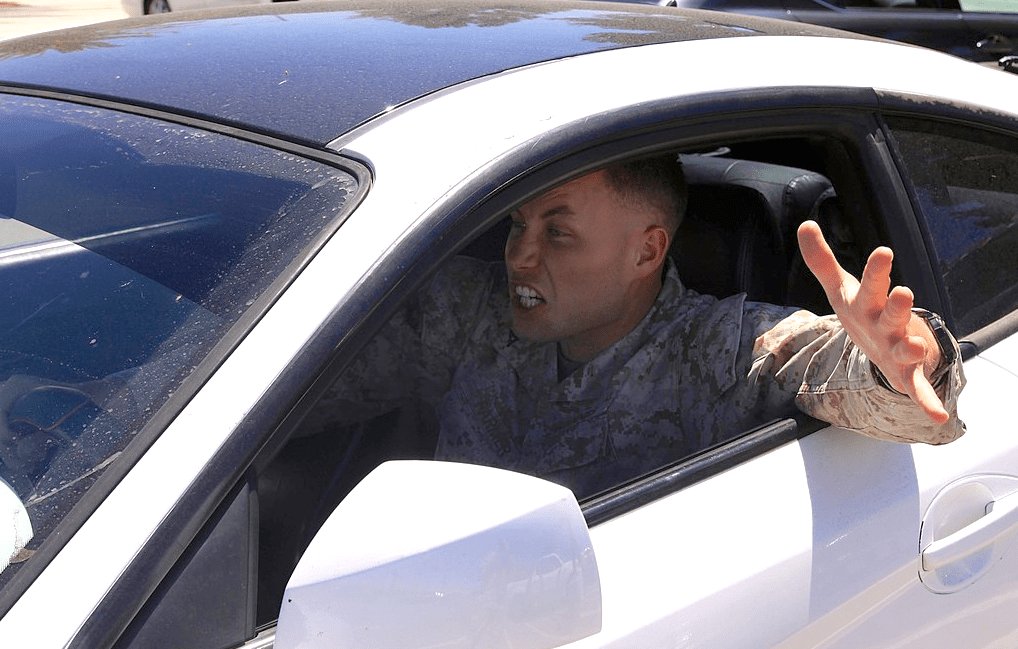Several weeks ago, on a Saturday afternoon, a middle-aged man attempted to drive me off the road as I rode on my bike in Northwestern Queens. He was angered that I was on the road. After stopping traffic to exit his vehicle, the man yelled death threats, opening up his trunk in an apparent move to withdraw what one could assume would likely be a weapon. I memorized his plate and then biked on.
The episode, which I reported to the police and later to the Queens District Attorney’s office, led to no action beyond a report being taken — even though, over the past four years, this driver had accumulated a disquieting 16 moving violations for speeding in school zones and failing to stop at red lights. Under what reasonable situation should a driver with this record, and with obvious anger issues, be permitted to operate a vehicle?
As more New Yorkers than ever before take up cycling and turn to alternative forms of transportation, legal protections must expand. Road rage incidents should be treated the same as DWIs and DUIs — with an immediate revocation or suspension of a driver's license for a violent escalation of aggressive driving. Under New York State law, any video documentation in evidence of road rage toward other drivers or cyclists should immediately, without exception, remove the privilege of driving. Doing so will make streets significantly safer for everyone, by establishing a safeguard mechanism for prevention when the majority of raging drivers are repeat offenders. It will target drivers who veer into cyclists while gesturing or shouting, intimidate and physically threaten others by getting out of their vehicles, and otherwise use their cars as weapons on the road.
At present, attempts of intentional acts of vehicular violence offer no legal remedy for law enforcement to pursue, and so cyclists, pedestrians, motorcyclists and other drivers are left legally disempowered on the roads. This deprivation of legal protection allows malign drivers to continue driving even though their rage eventually might kill or maim a vulnerable road user. For vulnerable cyclists and pedestrians, justice on the streets should mean not allowing the unquestionably dangerous on the streets.
In my experience as a regular bike commuter, I encounter a road rager every few weeks — as do many other regular cyclists. Recent surveys find that such behavior is disturbingly common: Almost a third of drivers reported shouting or cursing at other drivers, as many as 2 percent of drivers admitted seriously threatening behavior toward another driver or person and more than 5 percent of all drivers are estimated to be frequent road ragers.

Road ragers seem to exhibit a deep-seated animus, in particular, to cyclists. For these drivers, most often men, cyclists are a roadblock to their ability to drive faster, a nuisance in a city filled with traffic — or, worse, an opportunity for exerting the aggressive, unequal power between machine and man. Road ragers often express a tendency toward anger even when they’re not on the road and seek to blame others elsewhere in their lives, too, according to psychological studies.
Yet, current laws afford little protection to other drivers or cyclists in road rage cases unless law enforcement observes the aggression. Aggressive driving — such as switching lanes and speeding — can trigger a ticket and points on a license if a police officer witnesses it. But the majority of road rage incidents beyond aggressive driving — such as cutting off, tailgating, running a cyclist or driver off the road, or getting out of a vehicle to threaten a road user — go without recourse.
The New York State Department of Motor Vehicles recommends that those observing an incident of aggressive driving file a report to authorities. Such behavior is generally classified as menacing under penal law — a Class B misdemeanor. Non-injury incidents, however, are considered “closed” by law enforcement after a report is filed — so road ragers can carry on until they encounter their next target. Considering the psychological dimensions and pathology of road rage, the habitual behavior of the few but frequent perpetrators should be addressed.
In the absence of penal prosecution, our laws should go after the driving privileges of the most dangerous drivers on our roads in order to deter traffic violence. Cyclists may not have the same protection as the steel frames of cars, but they can be protected within the frames of cameras — if our laws permit.
Emil Skandul (@emilskandul) is the founder of Capitol Foundry, a digital-innovation firm based in New York City. He writes opinion commentary on technology and mobility policy.







